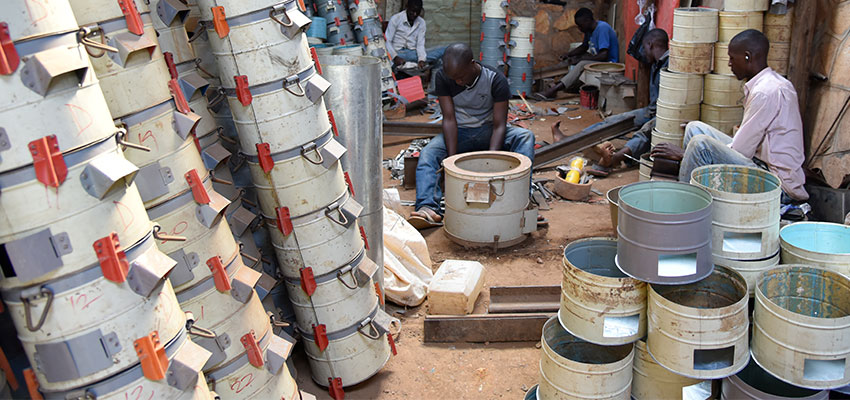
Forbes Technology Council | Council Post
Originial Forbes article online.
Research reveals that approximately 3.5 billion people, or about half of the world’s population, make up the bottom of the wealth pyramid (BoP). Other research shows that the per-capita income of the group below the international poverty line is approximately $1.90 per day or less. Although this specific group has been getting smaller, it is still close to 1 billion people.
As a visiting lecturer at the Massachusetts Institute of Technology’s D-Lab, I teach a class on engineering design for the developing world that focuses on taking appropriate technologies to scale. In addition to the business factors and value chain analyses that determine the viability of an idea, there are also numerous factors to consider when deciding what may be the best design-for-manufacturing approach for a product targeting the BoP.
The students work on projects from entrepreneurs in the developing world aiming to address problems such as medical devices, sanitation technologies, agricultural equipment and energy. All of the products address fundamental needs of the BoP, but since many developed world economies and supply chains have transitioned to a global scale, the glaring issue that teams encounter in their design efforts is the decision of what technology to use and where to fabricate the product. Is a locally made product that uses local materials and can be locally serviced favorable to a globally manufactured and supplied product?
The answer is ... it depends. It is helpful to begin with an impact objective. Is it to distribute the beneficial, high-quality product as widely as possible for the lowest cost, such as the ReMotion knee, or is it an entrepreneurial venture starting a local wealth-building path, such as the Makaa stove?
In the case of the former, a team from Stanford identified members from an underserved community who would greatly benefit from lower-cost prosthetics. By partnering with a provider located in Jaipur, India, the team was able to enter local markets and take a high-quality product design to commercialization at the lowest cost using a global supply chain.
In contrast, the creators of the Makaa stove pursued an entrepreneurial venture by taking a local wealth-building path and identifying first the best product adoption route in rural communities in Uganda. Both objectives are worthy and given the scale of the wealth problem in depth and breadth, it is not possible to generalize one solution path as fundamentally being better than the other.
Concerning cookstoves, most of the developing world cooks its food with solid fuels over an indoor three-stone fire. These types of fires cause very high levels of unhealthy air pollution inside the homes, which is a significant health problem in the developing world. The other problem is that the solid fuel of choice is wood, which is a biomass product that can easily be depleted far faster than it can grow. The need is to provide an efficient and clean means to cook food, and the current answer to the problem is the high-efficiency solid-fuel cookstove. It both uses less fuel and emits fewer particulates, but the extent of the benefit is related to the sophistication of the design and fabrication.
Envirofit currently sells one of the most advanced solid-fuel cookstoves for the developing world. They have invested in a high-quality global supply chain and has already sold 1.6 million cookstoves. The strategy here is to distribute high-performance stoves as widely as possible, resulting in a globally significant health and environmental benefit.
Separately, Appropriate Energy Saving Technologies Limited (AEST) makes the Makaa stove in Soroti, Uganda, in the thousands of units per year by using primarily local materials and labor. This majority-women organization continues to grow and provide benefits for the local economy. The Makaa stove is a local product made with extreme affordability in mind.
Is there anything in-between? The Berkely-Darfur stove is manufactured both locally and globally. It uses relatively advanced sheet metal production equipment to fabricate blanks that are shipped flat and then folded into stoves locally. The quality and cost lies between Makaa and Envirofit, and so does the production volume. It is likely that a successful AEST will benefit from technologies such as those that are used in the Berkely-Darfur stove as they increase their production volume. Meanwhile, Envirofit is ramping up production of its stoves in local markets, such as Nairobi, Kenya, extending the economic benefit of the production of the stoves to the local economy and paving the way for more product manufacturing in Africa.
Complicating these design decisions, it is worth noting that there is no such thing as the stereotypical human of the BoP. They differ in their locations, cultures, climates, resources and, most significantly, their relative level of wealth. The impact objective and the local context help inform the decision of what to offer and where to make it. Numerous design approaches are being implemented, but the current scale of the impact is still modest.
Another active story in the developing world revolves around lighting, a need the developed world began solving over 100 years ago and recent satellite images clearly show is lacking in the developing world. In these markets, solar-LED lanterns are starting to replace traditional kerosene lamps.
Through the MIT class, I encourage students to look at these projects from key angles: 1) What is the overall impact goal? 2) What technologies are required to offer a desirable and viable product? and 3) What are the tradeoffs in supply chain choices? I encourage the reader to revisit challenges in their industries by embracing these alternative techniques and looking at familiar products from new perspectives.
Harald Quintus-Bosz is a Forbes Councils Member, Co-Founder and CTO of Cooper Perkins, member of the Board of Advisors of the MIT Museum, and lecturer of an engineering class, Design for Scale, at MIT D-Lab. More about Harald Quintus-Bosz.

